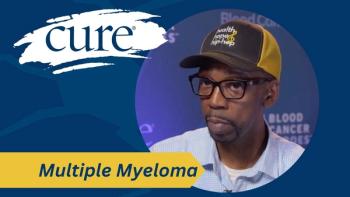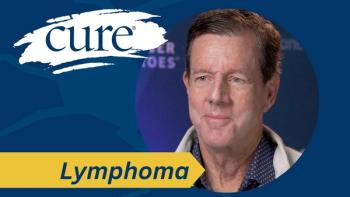
Computer Program Can Decrease Neuropathy in Breast Cancer Survivors
The benefit of neurofeedback by a closed-loop brain-computer interface was prominent when treating chemotherapy-induced peripheral neuropathy in patients with breast cancer.
Closed-loop brain-computer interface (BCI), a specific type of neurofeedback used to regulate brain waves, showed promising results for chemotherapy-induced peripheral neuropathy (CIPN) for breast cancer survivors, according to a recent study published in the journal, Cancer.
The study focused on investigating the most long-lasting and effective treatment to minimize CIPN, which is pain or tingling in the hands and feet, and one of the most common side effects of chemotherapy. CIPN is mainly a sensory neuropathy, which effects sensation and movement.
BCI is one of the ways to improve the brains of breast cancer survivors. CIPN can be more severe based on how the brain intercepts with signals that go to nerves within the body, according to the American Cancer Society.
“BCI is basically showing it is the identification of brain signatures because the brain processes pain. The signals get sent out from the hands, feet, fingers and toes, and the brain processes what those signals mean. And then turns it into pain or chronic pain or, in the case of neuropathy, numbness, tingling, lightning, shooting for their bodies, heaviness, whatever those symptoms may be. When we identify brainwaves that are associated with those feelings for each patient, if we can modify the brainwaves and decrease the amplitude, or make them less strong, for example, then patients typically feel relief from it. And it's just a matter of changing the way their brain processes those signals from the periphery,” explained Dr. Sarah Prinsloo, Department of Palliative, Rehabilitation and Integrative Medicine, Division of Cancer Medicine at The University of Texas MD Anderson Cancer Center, in a recent interview with CURE®.
Within the study, breast cancer survivors who were no longer in treatment were evaluated from baseline, after 20 treatment sessions of playing a video game that is designed to change the way the brain processes sensation and movement and one month later. In these 20 sessions, survivors were given rewards, such as visual cues and sounds, which were based on the ability to control their brain signals. The focus of this was to assess pain using the Pain Quality Assessment Scale (PQAS) after their treatments underwent. Changes in the brain and specific signals were also investigating one month after treatment sessions.
“Now, we have the capacity to go remote. And a good portion of our current studies patients are doing it all from their home. We send them the equipment, we schedule a zoom call with them, we hook everything up for them, we take control of their computer remotely, we teach them how to put the electrodes on their head, or we can run a session from while they're sitting in their living room and we're at MD Anderson,” explained Prisloo.
The investigators analyzed if BCI was more superior to placebo feedback (PLC) and to a waitlist control (WLC) in decreasing CIPN and changes in brain activity.
Both groups, BCI and PLC, led to a significantly decreased result in symptoms. The BCI groups showed greater improvement overall, compared to the WLC than the PLC group did. When it came to one month after treatment, symptoms got better for the BCI group only, resulting in an end of treatment prediction that symptoms improve at one month for the BCI group. Results showed that the perception of neuropathy can be changed by focusing on the brain directly, according to press release of the study.
“I think the big thing that came out of this study was that we didn't know how many sessions patients needed to receive to permanently get rid of their neuropathy. Because of the data from that trial, we're now funded to do another trial. By the same funders that funded this study, Rising Tide and the American Cancer Society. And now we're studying a dosage. The question is, ‘How many sessions are optimal for patients long term outcomes? And then we're also pairing it with a drug that's known to help neuropathy, meaning usually a one point drop in pain rating, to see if the pair of that the combination works better than just either one alone. We're in the middle of that trial right now,” noted Prinsloo.
Trials are continuing to further investigate the importance of BCI within breast cancer survivors, states Prinsloo.
“We are trying to determine how many sessions are the minimum amount that they need to get relief greater than a four-month period of time. Everybody’s brain map is different, everybody's experience of neuropathy is different. We're not taking only the severe cases in the study, we're also taking cases where it's just a little bit of numbness in the fingertips, but it drives them crazy, because they think about it every time they touch something. We are trying to broaden the audience and make it more what we call in science generalizable. And then also bringing that to underserved populations. And trying to see, again, because it's remote, we're making easier access, the next steps are in this trial and we are trying to meet those goals,’ said Prinsloo.
For more news on cancer updates, research and education, don’t forget to




